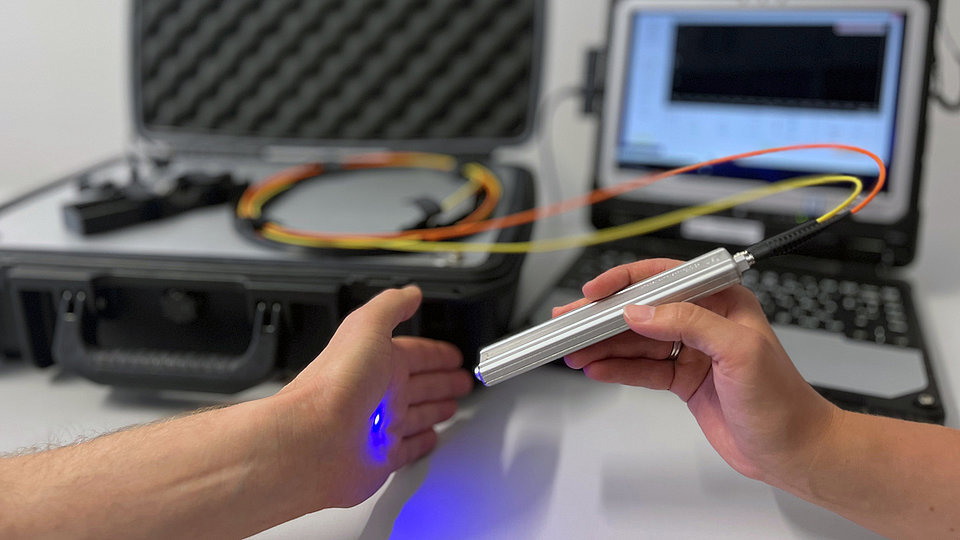Ready for a clinical study: compact Raman-based measurement systems for the detection of carotenoids
The clinical trials have recently started, using FBH’s newly developed spectrometer-free Raman-measurement-system together with a well-established spectrometer-based system [1] as reference to record the cutaneous carotenoid-concentrations of patients with hemic neoplasia. These data will be compared to those of healthy probands. This proof-of-concept-study is performed within FBH’s iCampµs activities together with Thiem-Research GmbH and Carl-Thiem-Klinikum Cottbus. The German Institute of Human Nutrition Potsdam-Rehbrücke supports the study by performing reference analysis using high performance liquid chromatography (HPLC).
The spectrometer-free system (Fig. 1) was developed based on a patented technique [2] exactly for this targeted purpose within the project. Key elements are a FBH dual-wavelength laser system and a filter-based detection unit. The laser emission at the two wavelengths and the filter characteristics was combined in a way that for one laser emission the Raman shift of the substance under study is within the transmission of the filter and for the other wavelengths only a flat background baseline is transmitted. For the targeted application a spectrometer system thus becomes dispensable. Such a non-sophisticated set-up could be facilitating Raman-based measurements significantly.
To reference the results obtained with the spectrometer-free system, a previously developed system with integrated spectrometer was used [3], which is based on shifted excitation resonance Raman difference spectroscopy. This system was implemented in a rugged housing (Fig. 2) and qualified for operation under clinical conditions too.
Both systems can work without external power supply over several hours. To control the measurements and to acquire the data, an in-house developed graphical user interface was used.
The proof-of-concept-study started in September 2023 with measurements planned with measurements on 90 patients and 45 probands and will last for two years.
This work is funded by the Federal Ministry of Education and Research (BMBF) within the projects iCampus (Grant Nos. 16ES1132 and 16ME0425), and Research Fab Microelectronics Germany–FMD (Grant No. 16FMD02).
Publications
[1] M. Braune, M. Maiwald, M.E. Darvin, B. Eppich, B. Sumpf, J. Lademann, G. Tränkle. "Shifted excitation resonance Raman difference spectroscopy system suitable for the quantitative in vivo detection of carotenoids in human skin". Laser Phys. Lett., vol. 15, no. 11, pp. 115601 (2018).
[2] "Verfahren und Vorrichtung zur Raman-Spektroskopie" - DE 10 2016 111 747 B4, US 10,794,766 B2, EP 3 465 165 B1, JP 6888085 B2
[3] S. Jung, M.E. Darvin, J. Schleusener, G. Thiede, J. Lademann, M. Braune, M. Maiwald, B. Sumpf, G. Tränkle, D. Kutzer, F. Elban, H. Fuss. "In vivo detection of changes in cutaneous carotenoids after chemotherapy using shifted excitation resonance Raman difference and fluorescence spectroscopy". Skin Res Technol., vol. 26, no. 2, pp. 301-307, DOI: 10.1111/srt.12800 (2020).

